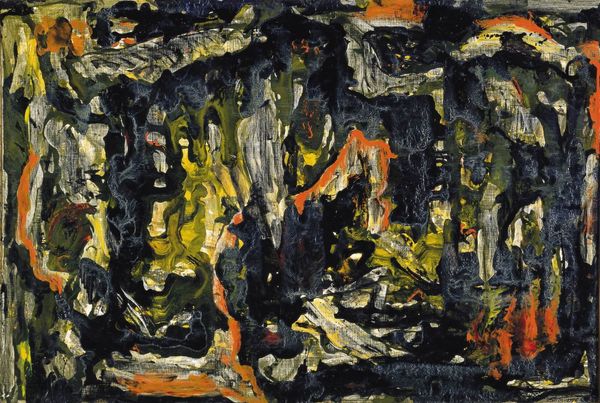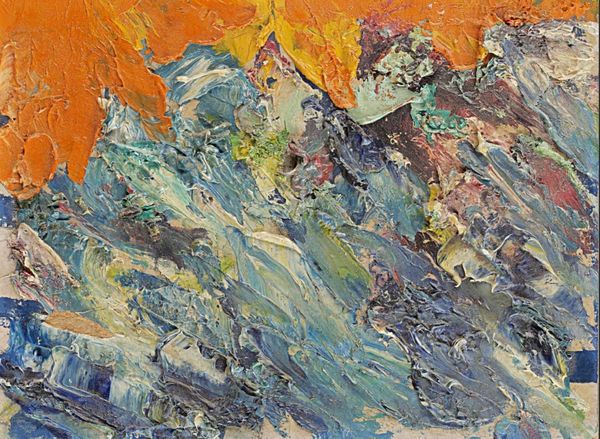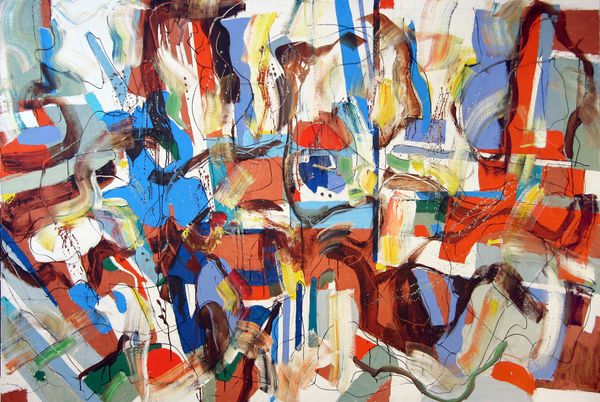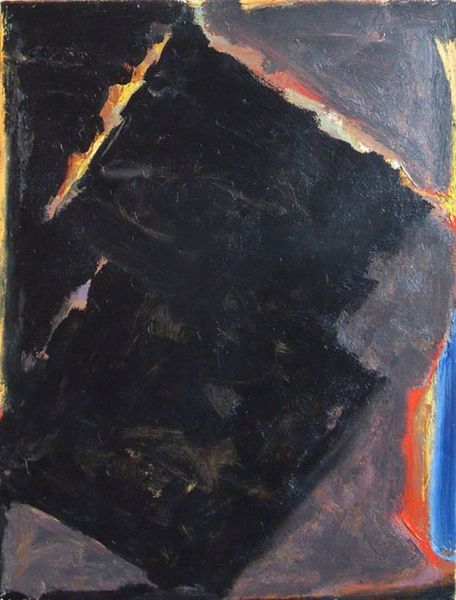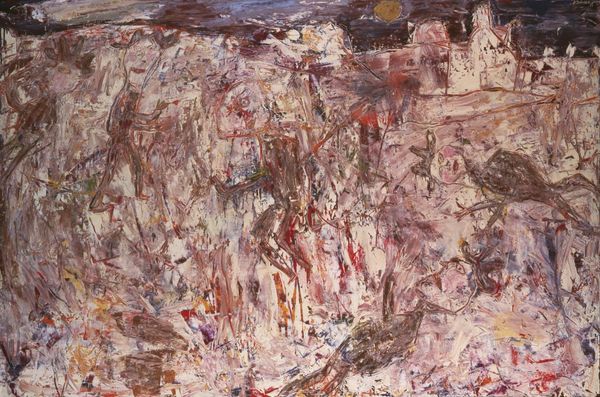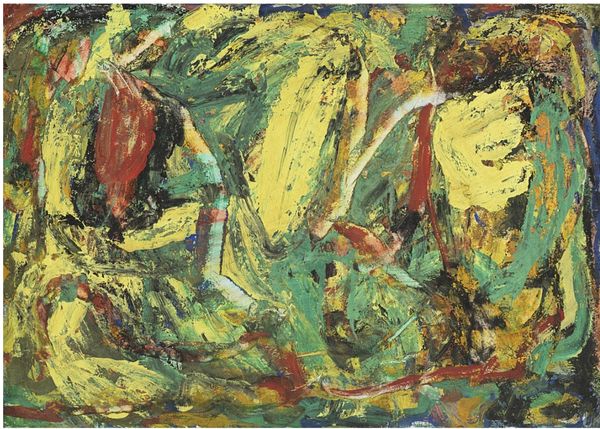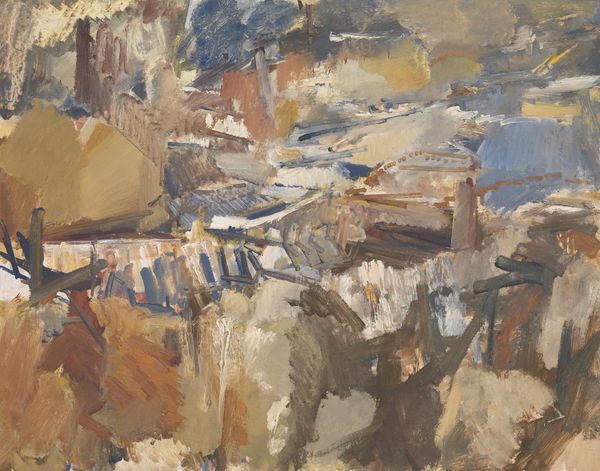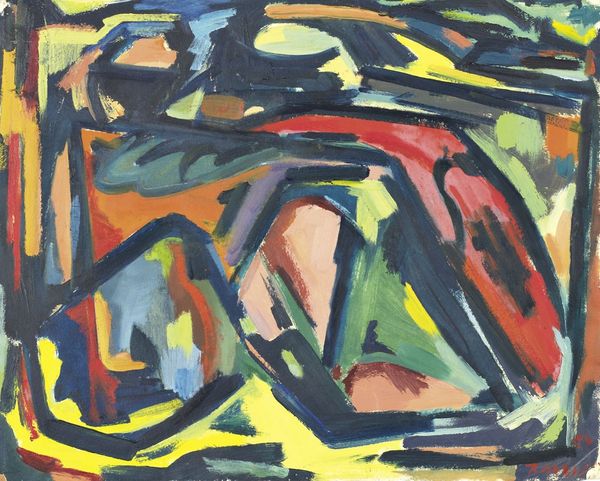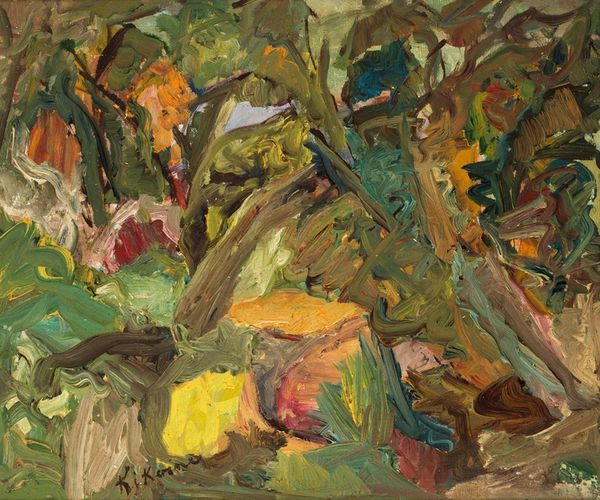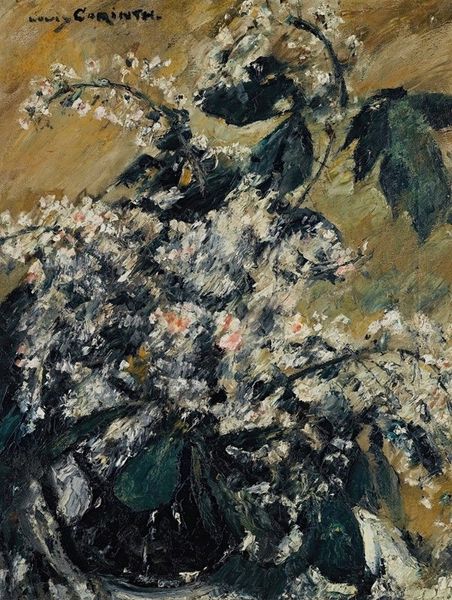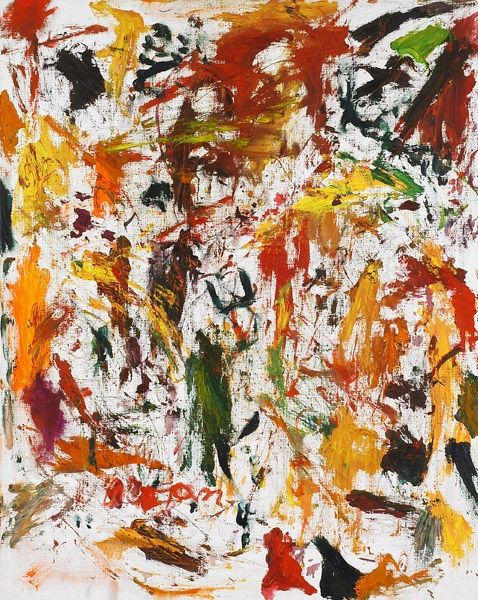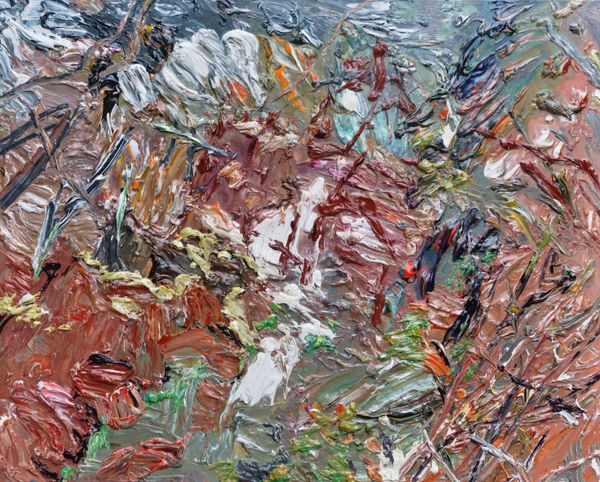
oil-paint
#
portrait
#
abstract expressionism
#
oil-paint
#
figuration
#
oil painting
#
neo expressionist
#
neo-expressionism
#
expressionism
#
matter-painting
#
expressionist
Copyright: Antonio Povedano,Fair Use
Curator: Antonio Povedano's oil painting, "Detalle Rostro," arrests the eye with its raw intensity, doesn't it? What's your first impression? Editor: The immediate impression is of texture; the paint is thickly applied. There's a visceral quality—almost sculptural. The tension in those brushstrokes… a sort of controlled chaos. Curator: Indeed. As the title suggests, we're presented with a detail, a fragment of a face. Given the absence of a specific date, interpreting it through the lens of neo-expressionism offers a compelling framework. Consider how Povedano, through his use of impasto, transforms the act of portraiture. Editor: I am struck by the apparent struggle—the artist’s hand very evident in the mark-making. The colours, while earthy, clash. What do you see in the materiality and process that informs the broader social context? Curator: Neo-expressionism arose, in part, as a reaction against the cool, detached intellectualism of some strains of Conceptual art. Artists were returning to a more visceral, subjective mode of expression, often grappling with personal or societal anxieties. This surface is dense. We see a world marked by heavy industrial processes and mass production in a very bodily form, even violently represented through gesture. Editor: So, do you see the choice of oil as integral to conveying a particular kind of… labor, almost? How the body's work affects how one looks, is rendered by brushstroke? Curator: Exactly! Oil paint allows for layering, for reworking, for a certain materiality that aligns with a renewed interest in craftsmanship but subverts classical harmony. Povedano isn’t just depicting a face; they are enacting a process of material and social engagement. Editor: I'm intrigued by this "detail." As we consider neo-expressionism's tendency towards figuration, is it this fragmentary approach perhaps emphasizing a crisis of identity—the self splintered, seen through the lens of late-capitalist unease? Curator: Precisely. It resists the idealized image often propagated, especially in the art world, through processes that detach making from substance. What results, for the viewer, is engagement not just with image but an un-ignorable reality. Editor: A final note, if I may? It’s in these visceral, textural planes, and those clashing colours, where the painting's voice truly speaks to a search for substance, an excavation, even a battle, happening beneath the surface. Curator: A battle waged not just within the canvas but reflecting the broader socio-economic struggles of a generation, wouldn't you say? Very well, let's leave our audience with those images.
Comments
No comments
Be the first to comment and join the conversation on the ultimate creative platform.
